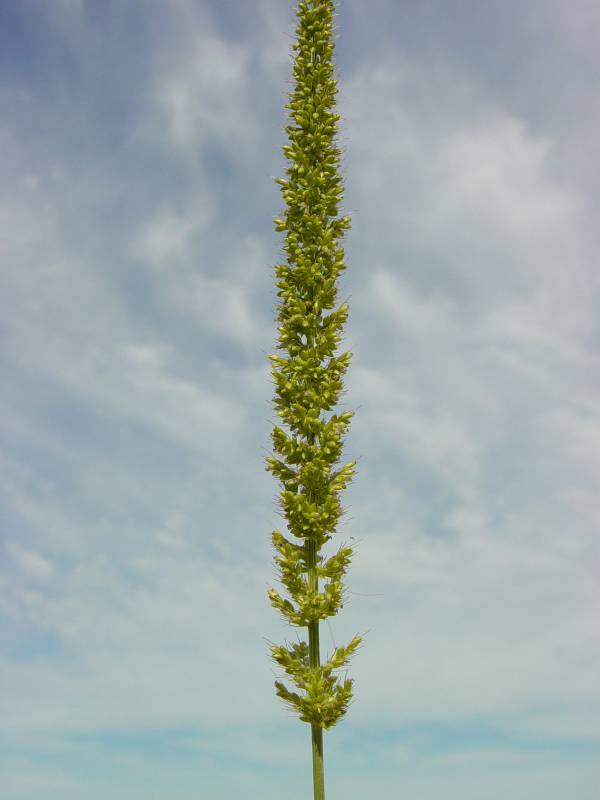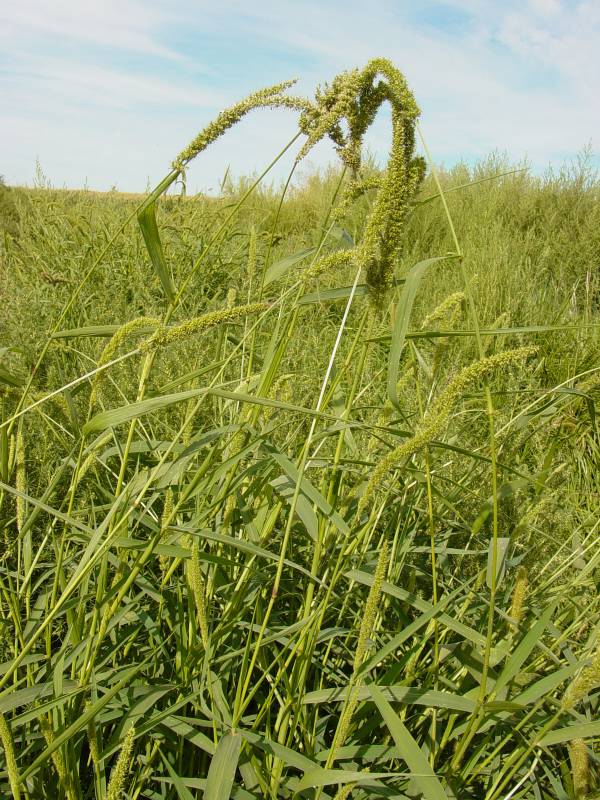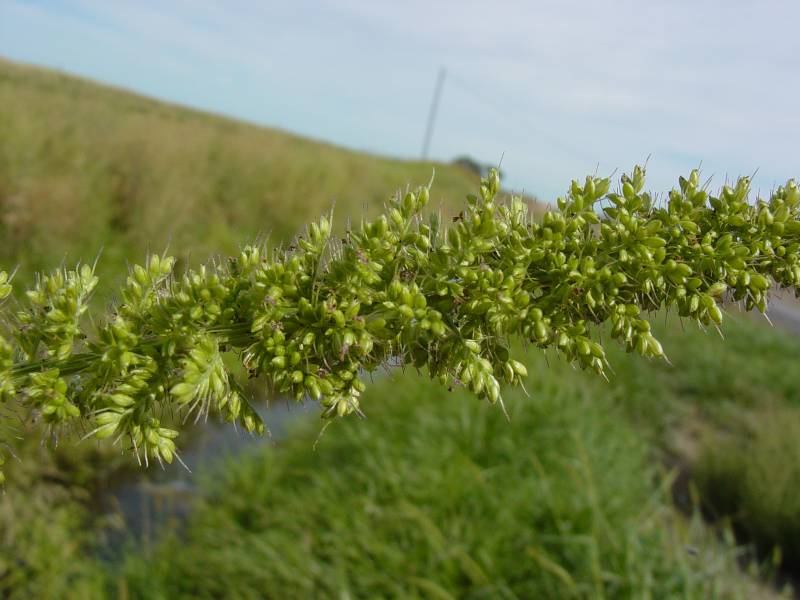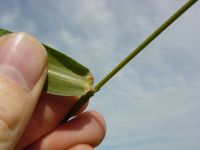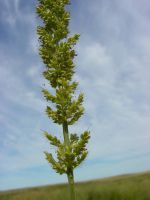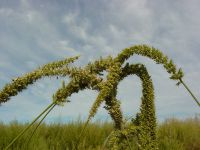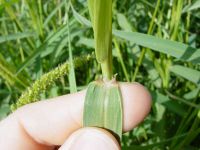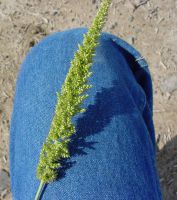Distribution: Occurring chiefly east of the Cascades crest in Washington; British Columbia to Alaska, east across North America to the Atlantic Coast.
Habitat: Weed of gardens, irrigated areas and wasteland.
Flowers: July-September
Origin: Introduced from Europe
Growth Duration: Annual
Conservation Status: Not of concern
Pollination: Wind
Annual, the culms 3-10 dm. tall, hollow, ascending to erect, usually freely branched from the base.
Sheaths open, pubescent at the throat; ligules about 1.5 mm. long, the outer half a fringe; blades flat, 4-10 mm. broad, scabrous-margined.
Inflorescence a cylindric, congested, erect panicle 5-10 cm. long; spikelets articulate below the glumes, sub-terete, 2-flowered, each subtended by a bristle 4-7 mm. long, retrorsely finely barbed; spikelets 2-2.5 mm. long; first glume 3-veined, half as along as the second; second glume 5-nerved, about equal to the lemma; lower flower sterile, the lemma acute, the narrow palea about half its length; upper flower perfect, the lemma leathery, enclosing the palea; anthers dark purple.
Publication: Ess. Agrostogr. 51, 171, 178. 1812.
Panicum verticillatum L.
Setaria carnei Hitchc.
PNW Herbaria: Specimen records of Setaria verticillata in the Consortium of Pacific Northwest Herbaria database
WA Flora Checklist: Setaria verticillata checklist entry
OregonFlora: Setaria verticillata information
E-Flora BC: Setaria verticillata atlas page
CalPhotos: Setaria verticillata photos

